Vaping has risen in popularity in recent years, especially among teenagers. E-cigarettes or vapes had gained a reputation of being healthier than smoking, which is why some people use them to quit real cigarettes. However, vapes are not risk-free. Although they don’t contain tobacco, they typically contain nicotine, the addictive chemical found in regular cigarettes, and other harmful substances. So far, there’s little research done about the long-term effects of vaping, but there are already many studies about the harmful short-term effects. E-cigarettes are thought to help people quit smoking, but many non-smokers take up the habit. [1] Even more concerning, the Centers for Disease Control and Prevention found that 14.1% of high school students vape regularly in 2022. [2]
What’s in Vaping Products?
Many people believe the fumes from e-cigarettes are just water vapor but this isn’t true. It’s actually a mist that contains many substances, including:
- Flavorings (the ingredients vary based on the flavor)
- Nicotine
- Propylene glycol and glycerin
It’s no wonder that vaping can lead to negative health effects since the aerosol can also contain:
- Marijuana and THC (tetrahydrocannabinol)
- Ultrafine particles that can enter the lungs
- Volatile organic compounds
- Heavy metals like nickel, tin, cadmium, and lead
- Cancer-causing chemicals like acetaldehyde and formaldehyde
- Lung disease-causing chemicals like diacetyl, acrolein, and diethylene glycol
- Vitamin E acetate, which is linked to lung injury
8 Side Effects of Vaping
EVALI
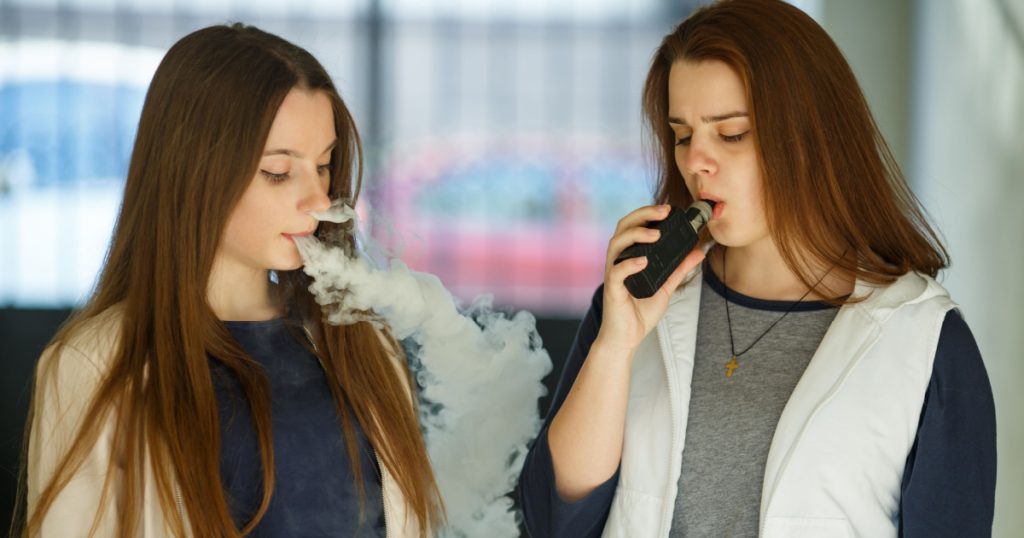
Vaping has been linked to lung issues, more specifically a condition called EVALI, short for e-cigarette, or vaping, product use-associated lung injury. In 2020, over 2,800 vape users required hospitalization because of their symptoms, most of them teenagers and young adults; 68 people died. EVALI symptoms tended to begin slowly and worsen over time. They can include:
- Coughing
- Shortness of breath
- Quick and shallow breaths
- Chest pain
- Rapid heartbeat
- Nausea and abdonimal pain
- Diarrhea and vomiting
- Fever and chills
As of now, vaping products containing vitamin E acetate are considered the prime cause for EVALI. But vaping products with nicotine and THC may also cause these symptoms. The CDC found that in 2020, over 80% of people hospitalized with EVALI used vaping products with THC, while others used ones with nicotine. Scientists are researching this disease to learn more about it, particularly how to cure it. [3]
Popcorn lung

Vaping has also been linked to bronchiolitis obliterans, also called popcorn lung. It’s a type of inflammation that causes breathing difficulties, and eventually, scarring in the air sacs and thickening and narrowing in the airways. It’s often caused by the ingredient diacetyl, which is commonly used as e-liquid flavoring. As of now, there is no cure for this condition, only treatments that can help manage symptoms, such as:
- Shortness of breath
- Coughing
- Wheezing
- Chest pain
Vaping-Related Lipoid Pneumonia
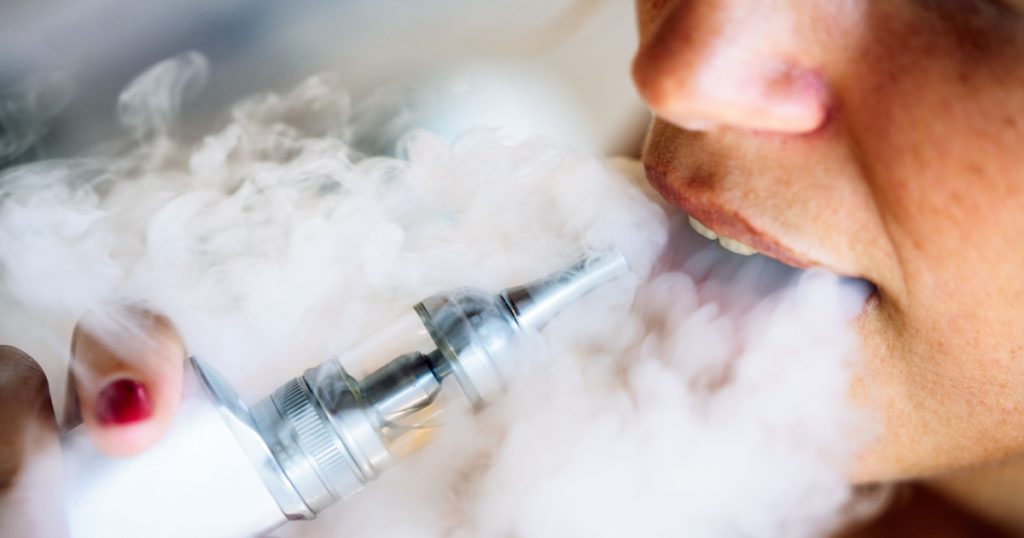
Regular pneumonia is caused by an infection, but lipoid pneumonia is caused by fatty acids in the lungs. E-liquid typically contain oily substances that can enter the lungs and cause inflammation. Symptoms of this kind of pneumonia include shortness of breath, a chronic cough, as well as blood-tinged mucus or coughing up blood. Right now, there is no treatment for this condition, only supportive care as the lungs repair. But the most important part of healing is avoiding damage caused by continued vaping.
Primary Spontaneous Pneumothorax

Primary spontaneous pneumothorax, also known as a collapsed lung, occurs when there’s a hole in a lung. This can happen from an injury like a knife wound that punctures the organ — or when air blisters on the lungs rupture. These blisters on their own don’t usually cause symptoms. They typically appear in tall, thin people during a phase of rapid growth during their childhood, leaving a weak point in their lungs. Most people are unaware they even have these blisters — until they rupture. Unfortunately, smoking and vaping is linked with an increased risk of collapsed lungs. The symptoms of this condition include shortness of breath, difficulty breathing, and sharp shoulder or chest pain. [4]
Asthma and COPD
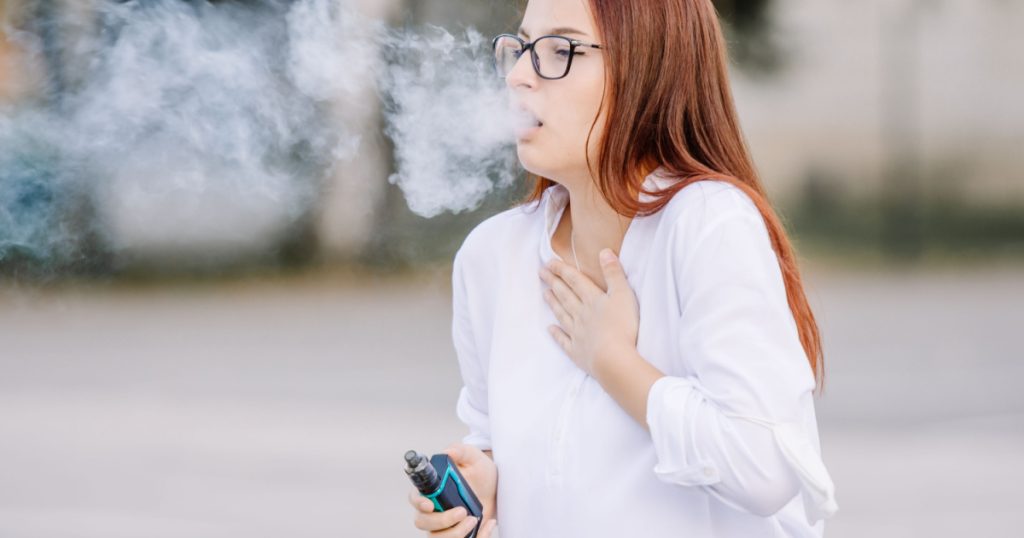
Vaping can cause multiple lung diseases and add asthma and chronic obstructive pulmonary disease (COPD) to the list. This habit can make people more likely to develop asthma and worsen existing asthma. Unfortunately, both of these conditions are chronic. Lung damage, when it comes to conditions that fall under COPD, is not reversible. Instead, it’s managed with medications and lifestyle changes. [5]
Addiction

Nicotine is already known for being highly addictive, which makes it increasingly detrimental for the developing brains of teenagers and young adults. Some vapes that claim to be nicotine-free still contain the substance. Additionally, research has found that teenagers who vape are more likely to take up smoking, which contains even more damaging chemicals. Addictive substances change brain chemistry, so the person will crave more of it, to the point that if they stop ingesting it, they can suffer from withdrawal symptoms. People may start vaping to quit smoking but end up addicted to vaping instead.
Increased cancer risk
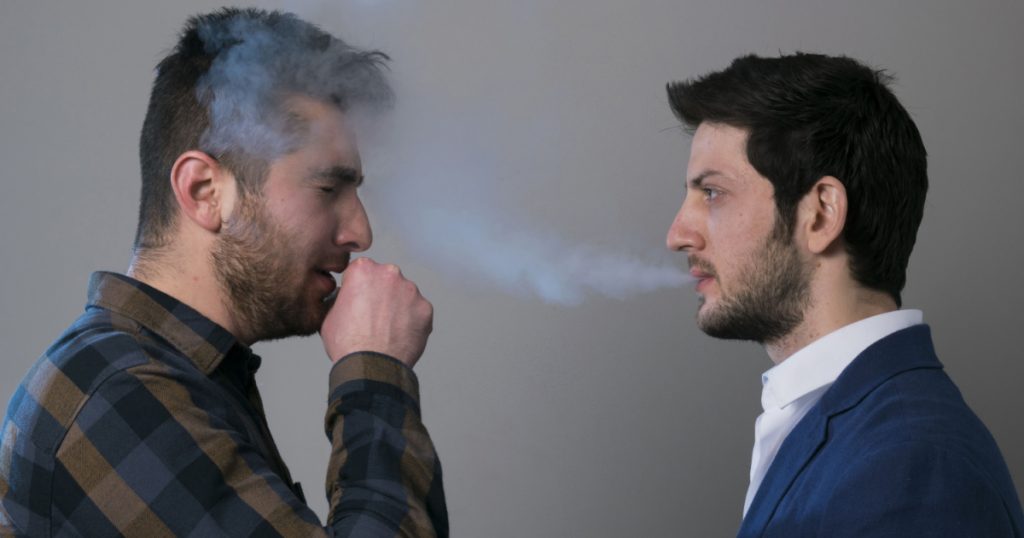
Certain substances found in e-liquid are linked to increased cancer risk. Even people “second-hand smoking” from e-cigarettes can inhale these harmful chemicals. However, vapes have not existed long enough to confirm a correlation between them and cancer. However, studies show that smoking tobacco leads to cancer development because it forces tiny particles deep into the lungs. The same might be proven about vaping in the future.
Organ damage
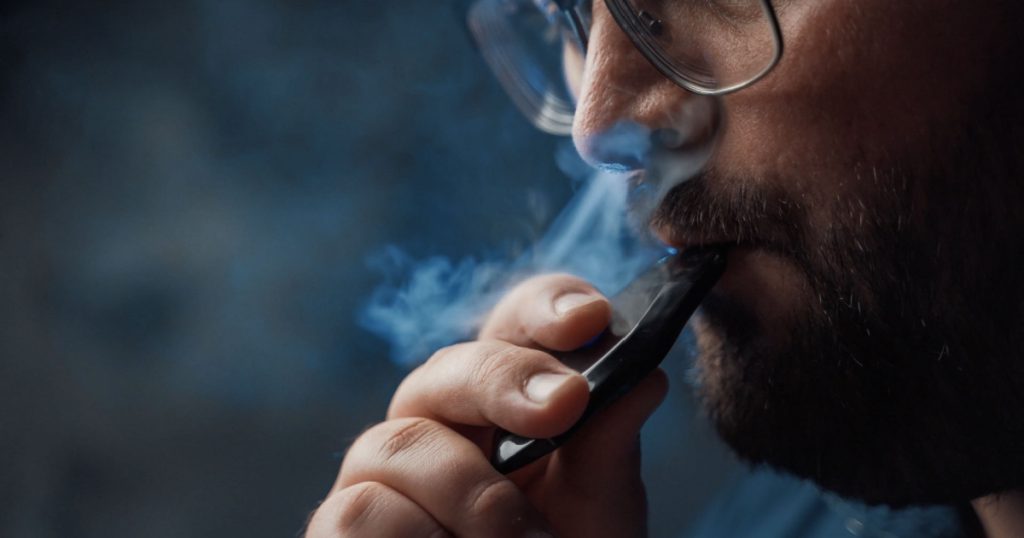
It’s no surprise that vaping can negatively affect the lungs; after all, vaping actively includes breathing. But it can also harm other organs. The substances in e-liquid can damage the heart and brain. For instance, nicotine is already known for narrowing arteries, raising blood pressure, and impairing brain development.
Keep Reading: People are shocked after seeing how disposable vape pens are made
Sources
- “Is vaping harmful?” Cancer Research UK. March 27, 2023.
- “Can vaping damage your lungs? What we do (and don’t) know.” Harvard Health Publishing. Robert H. Shmerling, MD. June 15, 2023
- “E-cigarette, or Vaping Product, Use Associated Lung Injury (EVALI).” Yale Medicine.
- “What Does Vaping Do to Your Lungs?” Hopkins Medicine. Stephen R. Broderick, M.D.
- “Vaping (E-Cigarettes).” Cleveland Clinic. August 22, 2022

